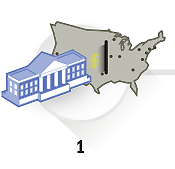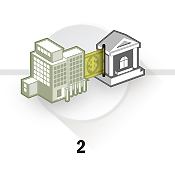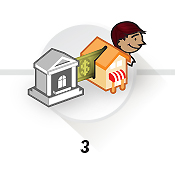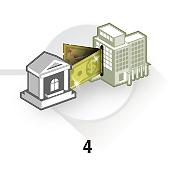In the United States, cash remains popular despite the rise of electronic payments. Before the 2007–09 recession, it appeared that some cash payments had been replaced by debit card transactions and other payments. However, evidence from the Diary of Consumer Payment Choice, a survey conducted in October 2012 by a group of Federal Reserve Banks, suggests that consumers use cash more frequently than any other payment instrument. Cash plays a dominant role for small-value transactions, and stands as the key alternative when other options are not available, according to researchers at the Federal Reserve Bank of San Francisco.
Findings from the 2012 Diary of Consumer Payment Choice showed that consumers on average used cash for 40 percent of their payments in a given month, followed by debit cards at 25 percent and credit cards at 17 percent. However, reflecting the preference for cash in smaller transactions, cash accounted for just 14 percent of the value of payments. The upshot: consumers make a lot of low-dollar purchases with cash. Cash was the instrument of choice in 66 percent of purchases of up to $9.99, and in 45 percent of purchases between $10 and $24.99
Cash abides for various reasons. It affords privacy, unlike checks or electronic transactions, which include information about the purchaser. Cash is convenient and widely accepted. For these reasons and because the dollar is viewed as a safe store of value across the globe, the dollar amount of U.S. currency in circulation worldwide continues to grow. The total has tripled since the mid-1990s to $1.3 trillion in April 2014. Roughly two-thirds of all U.S. currency circulates outside the United States.
For detailed data on currency and coin, see the Federal Reserve Board of Governors website at federalreserve.gov/paymentsystems/coin_data.htm
Federal Reserve: The bankers' bank for cash services
Just as individuals keep money in a bank account, many commercial banks, credit unions, and savings and loan associations put cash in accounts at the nearest Federal Reserve Bank. When financial institutions have more cash than they need to serve their customers, they deposit their excess cash at a Reserve Bank.
When the currency arrives at a Reserve Bank from a financial institution, machines count it, process it to ensure quality, and shred worn-out bills. Cash handling machines also check currency for possible counterfeits, and a Fed employee determines their authenticity. The Fed sends counterfeit bills to the U.S. Secret Service for investigation.
When banks need cash, they order it from the Fed and armored cars deliver it. This currency is either newly minted notes that Reserve Banks receive from the U.S. Department of the Treasury's Bureau of Engraving and Printing or previously circulated notes sent back to the Fed and processed.
How the Fed processes cash




The Fed closely monitors currency to ensure the accounts of the different institutions are accurate. The accounting is handled electronically through secure online connections.
Payments Fraud
Rising incidence of fraud is an unfortunate byproduct of the increase in the number of payments initiated and processed electronically.
In 2012 there were an estimated 31.1 million unauthorized transactions, with a value of $6.1 billion, according to the 2013 Federal Reserve Payments Study. The vast majority of these fraudulent transactions, 92 percent, were conducted with general-purpose debit or credit cards. Only 5 percent of the fraudulent transactions occurred via ACH and 3 percent through checks, according to the 2013 study.
Payments security is of particular interest to the Atlanta Fed. The Atlanta Reserve Bank is home to the Retail Payments Risk Forum, a knowledge center that works with financial institutions, industry participants, regulators, and law enforcement to research issues and sponsor dialogue to promote the mitigation of risks in all forms of payments.
To learn more about the Retail Payments Risk Forum, go to portalsandrails.frbatlanta.org.



